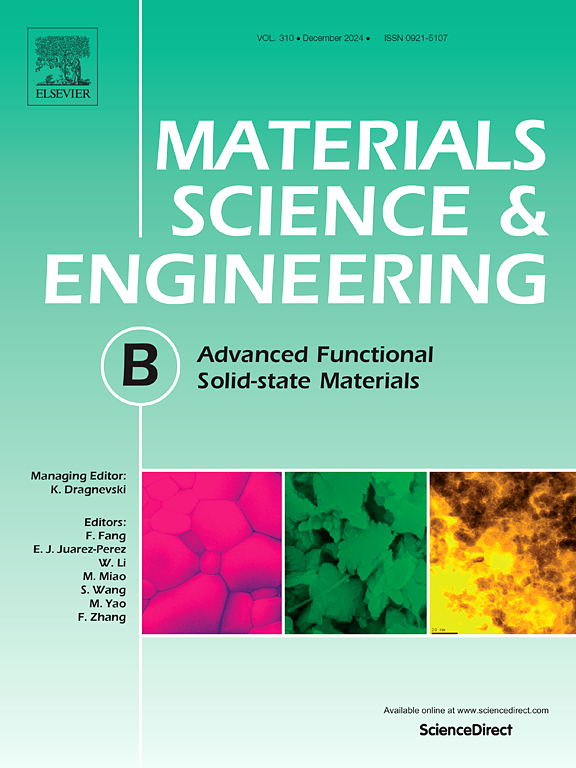Controlled anchoring of PdPtAg nanodots on Au nanoplates: advancing quaternary metallic electrocatalysts for enhanced formic acid electro-oxidation through interface engineering
IF 4.6
3区 材料科学
Q2 MATERIALS SCIENCE, MULTIDISCIPLINARY
引用次数: 0
Abstract
We introduce a novel synthesis of Au-PdPtAg heterogeneous nanoplates (HNPs) with precisely engineered multimetallic interfaces, significantly enhancing formic acid electro-oxidation (FAOR). The Au-PdPtAg HNPs/C catalyst exhibits exceptional mass activity (1.9 times higher as that of Pt/C), accelerated kinetics, and long-term durability. In situ attenuated total reflectance infrared (ATR-IR) spectroscopy reveals unique CO adsorption behavior on Au-PdPtAg HNPs, with both bridged and atop species observed—a contrast to Pt/C, where only bridged adsorption occurs. DFT simulations show the d-band center of interfacial Pt atoms in PtPdAgAu(111) (−1.87 eV) shifts closer to the Fermi level compared to Pt(111) (−2.29 eV), lowering the energy barrier for FAOR intermediates. This work provides a practical route for designing multimetallic electrocatalysts with controlled architectures and highlights the role of interface engineering in advancing fuel cell technologies.

PdPtAg纳米点在Au纳米板上的控制锚定:通过界面工程推进季系金属电催化剂增强甲酸电氧化
我们介绍了一种具有精确设计的多金属界面的Au-PdPtAg非均相纳米板(HNPs)的新合成方法,该方法显著增强了甲酸电氧化(FAOR)。Au-PdPtAg HNPs/C催化剂表现出优异的质量活性(比Pt/C高1.9倍)、加速动力学和长期耐久性。原位衰减全反射红外(ATR-IR)光谱揭示了Au-PdPtAg HNPs上独特的CO吸附行为,桥接和顶部都有,与Pt/C相比,只有桥接吸附发生。DFT模拟表明,与Pt(111) (- 2.29 eV)相比,PtPdAgAu(111) (- 1.87 eV)中界面Pt原子的d波段中心更接近费米能级,降低了FAOR中间体的能垒。这项工作为设计具有可控结构的多金属电催化剂提供了一条实用途径,并突出了界面工程在推进燃料电池技术中的作用。
本文章由计算机程序翻译,如有差异,请以英文原文为准。
求助全文
约1分钟内获得全文
求助全文
来源期刊

Materials Science and Engineering: B
工程技术-材料科学:综合
CiteScore
5.60
自引率
2.80%
发文量
481
审稿时长
3.5 months
期刊介绍:
The journal provides an international medium for the publication of theoretical and experimental studies and reviews related to the electronic, electrochemical, ionic, magnetic, optical, and biosensing properties of solid state materials in bulk, thin film and particulate forms. Papers dealing with synthesis, processing, characterization, structure, physical properties and computational aspects of nano-crystalline, crystalline, amorphous and glassy forms of ceramics, semiconductors, layered insertion compounds, low-dimensional compounds and systems, fast-ion conductors, polymers and dielectrics are viewed as suitable for publication. Articles focused on nano-structured aspects of these advanced solid-state materials will also be considered suitable.
 求助内容:
求助内容: 应助结果提醒方式:
应助结果提醒方式:


